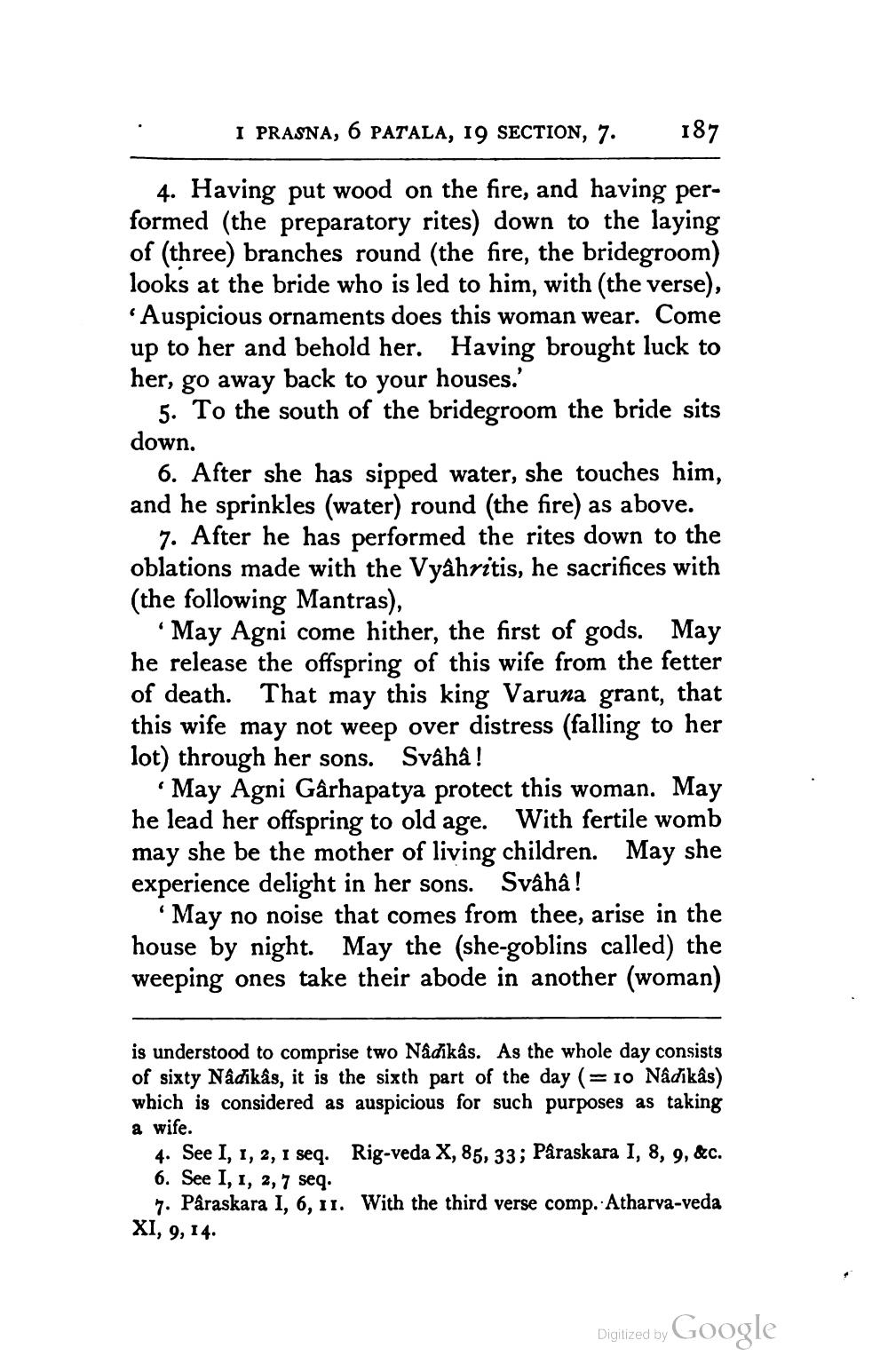________________
I PRASNA, 6 PATALA, 19 SECTION, 7.
187
4. Having put wood on the fire, and having performed (the preparatory rites) down to the laying of (three) branches round (the fire, the bridegroom) looks at the bride who is led to him, with (the verse),
Auspicious ornaments does this woman wear. Come up to her and behold her. Having brought luck to her, go away back to your houses.'
5. To the south of the bridegroom the bride sits down.
6. After she has sipped water, she touches him, and he sprinkles (water) round (the fire) as above.
7. After he has performed the rites down to the oblations made with the Vyâhritis, he sacrifices with (the following Mantras),
May Agni come hither, the first of gods. May he release the offspring of this wife from the fetter of death. That may this king Varuna grant, that this wife may not weep over distress (falling to her lot) through her sons. Svâhâ !
. May Agni Gârhapatya protect this woman. May he lead her offspring to old age. With fertile womb may she be the mother of living children. May she experience delight in her sons. Svâhâ !
May no noise that comes from thee, arise in the house by night. May the (she-goblins called) the weeping ones take their abode in another (woman)
is understood to comprise two Nädikas. As the whole day consists of sixty Nadikâs, it is the sixth part of the day (= 10 Nâdikas) which is considered as auspicious for such purposes as taking a wife.
4. See I, 1, 2, 1 seq. Rig-veda X, 85, 33; Paraskara I, 8, 9, &c. 6. See I, 1, 2, 7 seq.
7. Paraskara I, 6, 11. With the third verse comp. Atharva-veda XI, 9, 14.
Digilized by Google




